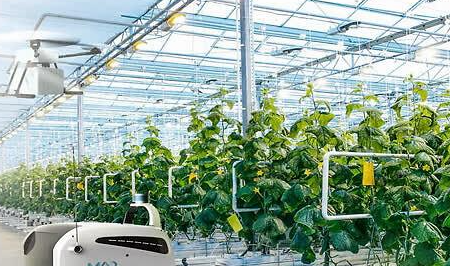Agriculture is the foundation of my country’s economic development. With the continuous advancement of social productivity levels and science and technology, traditional agriculture can no longer meet the requirements of modern industry, life and ecological balance. As a new industrial form, smart farms have attracted more and more attention in recent years. At present, most research on smart farms at home and abroad is to apply it to agriculture, forestry, animal husbandry, fishery and other fields for exploratory research and achieve certain results, but it has not yet formed a relatively complete and complete system theoretical system; some domestic scholars have also proposed through practical exploration based on The agricultural Internet of Things platform based on cloud computing has not yet been fully promoted and used.
1.2 History and current situation of research at home and abroad
From a research perspective, smart agriculture is a new development model formed by my country in the context of the new era, combining modern information technology, computer technology, network communications and other related science and technology. It breaks the imbalance of information resources caused by traditional agricultural production methods and management methods. Enables visual sales of agricultural products; develops corresponding measures to improve farmers’ income levels by analyzing and forecasting market demand; promotes sustained, healthy and stable growth of the rural economy. From the purpose of the research,

1.3 Main contents of thesis research
This paper mainly studies smart agriculture and combines the development status of smart agriculture at home and abroad to propose intelligent agricultural product production technologies based on the Internet of Things, cloud computing platforms, and rural information service systems.
1. Analyze the problems existing in the combination of traditional planting methods and modern technology in my country. Based on China’s current national conditions, we will conduct an in-depth analysis of the factors and countermeasures that restrict its development;
2. Explain the problems that arise in the construction of new logistics distribution systems based on the Internet of Things and big data and provide corresponding solutions. With the purpose of solving these problems, smart agriculture can achieve efficient allocation of information, funds and other resources;
Chapter 2 Overall Scheme Design of Wireless Data Transmission
2.1 System requirements
(1) System reliability requirements: Smart agriculture is based on information as the core and is optimized in terms of hardware to ensure that it can meet users’ basic needs for product performance and quality.
(2) The data transmission rate needs to reach the corresponding level. In order to achieve standard indicators such as real-time, accuracy and maintainability, there must be a unified and strictly standardized operating process; at the same time, data should be updated in a timely manner and be compatible with other functional modules in the system. Smart agriculture can respond and operate quickly in different regions and seasons;
2.2 Main technologies of the system
(1)Data collection
The collection and processing of agricultural information is the most basic, important and critical issue in the smart agricultural production process. Under the traditional model, due to farmers’ limited ability to obtain information, single sources of information, and lack of effective means, the level of rural informatization in our country is low; however, with the continuous development and improvement of science and technology and the wide application of it, a large number of agricultural products can be The Internet spreads rapidly and circulates to markets around the world for consumers to purchase and use.
(2) Data transmission and processing system: Various raw data required in the agricultural production process mainly come from agricultural machinery and equipment.
2.3 Network topology of wireless data transmission system
In the construction process of smart agriculture, network topology is very important and complex, which can make the data transmission system simpler. Therefore, it is necessary to choose a suitable, efficient, stable, safe and reliable wireless signal channel to connect agricultural information and external communication; in addition, it is necessary to ensure that the wired communication lines are not destroyed or damaged.
(1) Optical fiber routing: It is mainly used to use optical cables as transmission media on smart mobile devices. The purpose of achieving long-distance wireless access is composed of optical fiber nodes and routers in the wired network topology, and it can configure these nodes. A whole.Keywords: network IO controller